How green is their valley: Tasmania's best producers
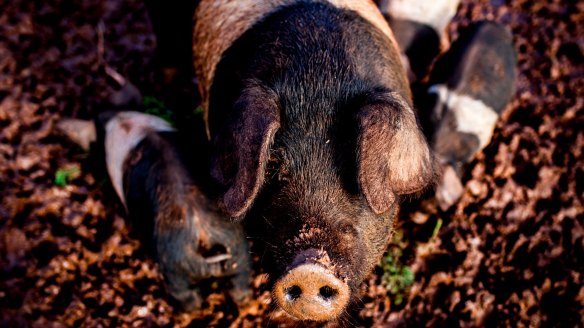
It is 419 kilometres from Melbourne over the wild green seas of Bass Strait to the northern tip of Tasmania. I have read the adventures of Mawson, Scott and Shackleton and so, even with the miracle of flight and relative comfort of a pressurised cabin, it gives me pause to think it is only the Apple Isle that lies between me and Antarctica.
As our Dash 8 drops through the impossibly thick white clouds, she turns up the Tamar River Valley towards Launceston and I press my nose to the window. The view is stunning: a diorama of emerald patchwork green broken by creeks and dams, jewelled with tiny red and green roofs of tile and tin.
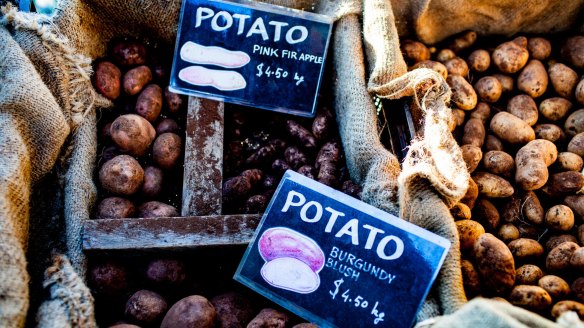
Soft green hills roll back from the beautiful river, known as Kanamaluka by its original people. The banks give way to vineyards, apple orchards and pastures freckled with black-faced sheep and white-faced cattle. The odd Georgian mansion dotted along the valley points to the region's heritage and hints at the island's dark beginnings as a penal colony and the fate of its Indigenous population.
There is a palpable sense of the past as you drive through these small towns and hamlets with one pub and a shop with faded signs. Small bridges cross fast-running creeks or still marshes and then a corner climbs into eucalyptus forest giving way to wooden fences, green pastures and suckling winter lambs. Tassie has just over 500,000 people in an area of 64,000 square kilometres. Forty per cent of this is protected natural woodlands, old growth forest and World Heritage sites. If you are interested in pristine air, good food and an escape from fast-paced urban life, there is no better place.
Tasmania is colloquially known as the bread basket of Australia due to the breadth and beauty of its agricultural output. Northern Tasmania produces some of the best of it. Stunning dairy produce, cool-climate vineyards, berries, apples, oysters, sheep and cattle, not to mention speciality ingredients like kelp, Flinders Island wallaby and black truffles, make it an exciting area for a chef and diners alike.
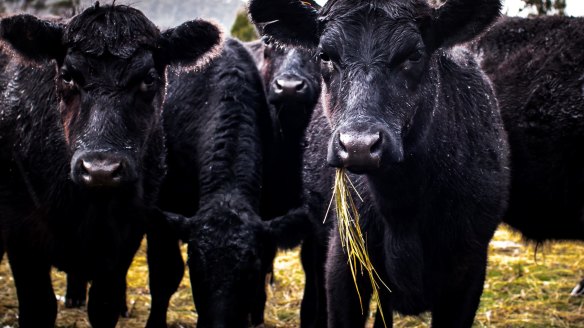
I'm here to cook a truffle dinner at Josef Chromy winery with local and international culinary students using local seasonal produce. There is no better place to see my raw ingredients than the Launceston Harvest Community Farmers' Market, held every Saturday morning in a quiet inner-city carpark.
The market has been successful since its inception in 2012 due to the abundance of small producers in the region and the tight criteria for selecting stallholders. Part of this is an ethical charter so you can be assured of ethically raised meats, organic garden produce and artisanal breads and cheeses as well as meeting the people behind their product.
Blessed are the cheesemakers
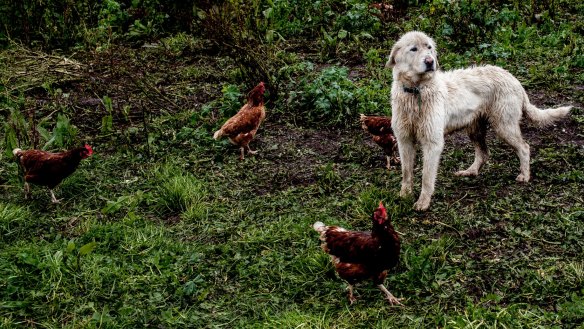
Joe and Antonia Gretschmann, of Elgaar Farm, have been farming their certified organic property in Moltema, 42 kilometres east of Launceston, since 1986 and produce Swiss-style cheese, an authentic cheddar, milk, pot-set yoghurt and cream (in returnable glass containers). Originally from Bavaria, where they farmed and made a similar range of products, the handsome couple retain their Teutonic frankness and economy of speech that belies a deep belief in what they are doing. Having worked the traditional European model of small-scale agriculture and value-added product, selling milk as an undervalued commodity to the dairy giants was never a consideration.
The Gretschmanns tend 80 jersey and guernsey cows. Antonia tells me their herd was chosen primarily for their "pretty faces and sweet nature" over their "capacity to produce intense and rich milk" from their diet of organic grasses, legumes and herbs. When I ask what happens to her cattle when their production is no longer viable, Antonia becomes passionate, "They are part of the family. We put them out to pasture to live their lives and to be grandmothers to our young calves." She wants me to understand this is the only moral way.
Buttered up
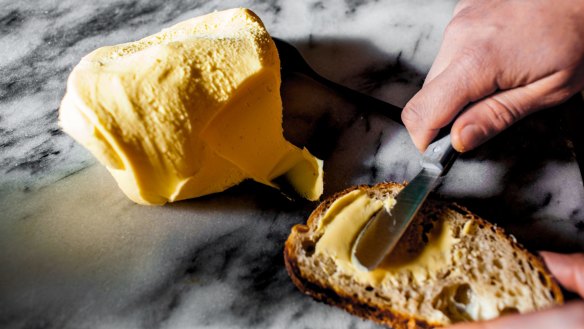
Olivia Morrison traded her inner-city Sydney lifestyle after being exposed to handmade product through good restaurants [including mine]. "I had always been the consumer, wondering how butter in the top restaurants just tasted better. I decided to see if I could make something similar. I wanted to offer it to others like me, who wanted the best from the products they were putting on the table."
Olivia learnt to make butter from Patrick "the butter Viking", who also provides his expertise to Danish restaurant Noma. She and business partner Lili Foster have now been making handmade butter out of their small suburban garage facility for two years as Tasmanian Butter Co. They use milk from local farms as well as Tasman Sea salt and Tamar Valley black truffles (for truffle butter) and produce up to 120 kilograms a week for sale through markets and local restaurants. Some is making its way to the better mainland restaurants such as Phil Wood's Laura on the Mornington Peninsula.
The company is about to move to a 600-square-metre facility in a Victorian-era industrial building, incorporating a dairy, bakery and cafe. The issue for them, as butter producers, is supply. With only 2 per cent of milk staying on the island for value-added product, theirs is a constant battle against the dairy monoliths of Fonterra and Lion Nathan, who send the bulk of production to the mainland for processing and resale back to local consumers. Olivia and Lili sell through local markets like Harvest because they can access customers directly. Olivia says that by "removing the middle man I can connect with my customers in a more meaningful way and pay my farmers a fair price. There is nothing like seeing the expression on someone's face when they truly enjoy eating something that took you hours of work and dedication to make".
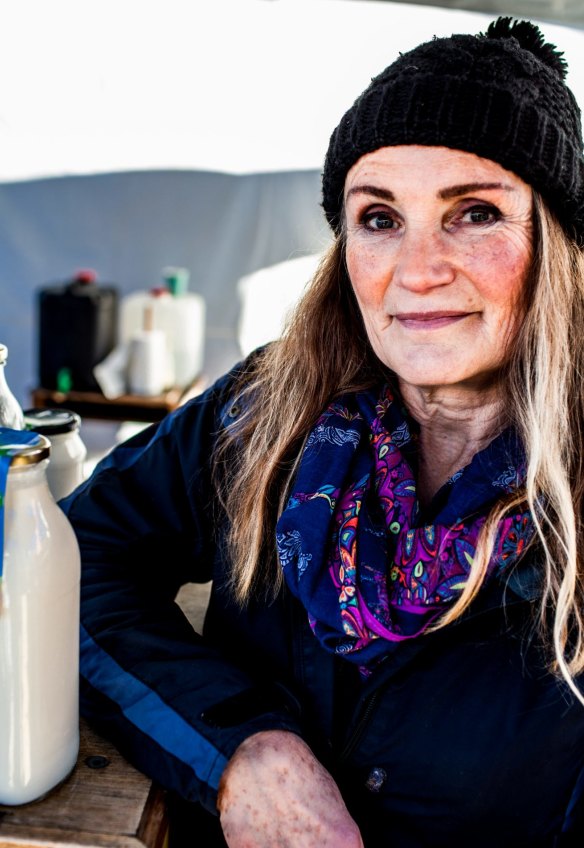
Herding chickens
Standing behind a wall of egg cartons is Angela Glover who has been running Mount Roland free-range duck and chicken eggs since 1998 with her husband Phil. Situated at the base of Mount Roland, about 100 kilometres east of Launceston, Angela says their property has the benefits of "clean air, high rainfall, magnificent scenery and no foxes" though she complains "there's too much rain and not enough people".
Therein lies the conundrum of living on this beautiful island. For small producers, their lifestyle choice comes at a price. Distanced from the mainland, their cost of living is higher than the more populated areas of Australia, the labour pool is tight and the cost of transport means selling locally is the only profitable recourse.
In a beaten rabbit felt Akubra hat, Phil describes his hopes for their "small patch of heaven". The couple's shared values of "Independence, raising animals ethically, producing clean food, minimal chemicals and keeping close to nature" provide some solace to the "boom and bust" nature of small-scale agriculture. Phil has been on the land his whole life and was a shearer until 1991, when the floor price of wool was removed and "the industry was decimated". Having come from a dairy family, he lamented that industry's fate when "the supermarkets were selling at two bucks and we were getting 18 cents". Not that Phil was complaining. It's not his way. He recounts his and Angela's plans for the future: "Bigger is not better".
"We run 1000 birds, we keep them happy and they have a good life."
The chickens get the run of lush pasture in view of the fog-shrouded cap of Mount Roland under the watchful eye of four maremma sheepdogs and their pups. The dogs, indigenous to the mountains of Northern Italy, are raised with the chickens. Fatally aggressive to predators, kind to family but wary of other humans, the dogs eat up to 100 eggs a day and like to sleep with their charges or even in the snow in preference to kennels. After early retirement, the Glovers' birds are sold into the booming backyard layers market.
The one-man-show
For Guy Robertson, farming is an opportunity to work with the land to showcase ethical produce and farming methods. His Mount Gnomon Farm is just south of the small coastal town of Penguin. He has farmed his 40-hectare for nine years, producing heritage pork, some beef, lamb, free-range eggs and mixed herbs. The farm abuts the wilderness area of Mount Dial with deep clay loam soils, temperate climate and reliably prodigious annual rainfall of 1200 millimetres. Recent rains were evident as the deep clay sucked at my boots. In his late 30s, Guy, a fourth-generation farmer, has seen enough to be disparaging about large corporate commodity farming and sees himself as the "master of his own destiny".
This area is one of the poorest electorates in Australia and Guy wants to make a difference to his local community by "demonstrating direct niche marketing of value-added, ethical produce in a region previously largely based on commodities". Guy has plans for a farm stay as a natural fit for his sporadically open, smokehouse restaurant and its kitchen garden. A one man show, Guy uses volunteers or "wwoofers" [an organisation linking volunteers with organic farmers] to keep the dream alive. The young workers, mostly European, sleep in converted school buses. There is an air of geniality between Guy and his young cohorts as they make sausages. You get the feeling the exchange is fair.
The beef barons
At the Real Beef stand Bjarke Pedersen and his son Luke stand behind a wall of refrigerated meat like rugby prop forwards. I don't make the comparison out loud because Bjarke has hands like hammers and this is hardcore AFL territory. Counterintuitively those hands are not those of a butcher. Bjarke came to Tasmania 12 years ago from a successful IT business, to buy a farm and retire. Instead he met farmer Larry Blackberry whose grandfather started the farm in the Exeter area during World War II. Larry and his wife Alison still live on the original farm. Bjarke and his wife Margaret purchased a patch of this, and they formed a friendship. In character, Larry is dry and upright like one of the gums along his fence line. He holds a telephone like it's a grenade with the pin pulled. They run 170 angus on the 81-hectare farm and now have over 240 hectares between them over four farms for their Real Beef label. Bjarke believes their brand's future is bright and is bullish as he describes plans to take the brand overseas as well as further expansion.Both men turn evangelical when it comes to discussion on land care. The old farm will soon be organically certified. For Larry this is just bureaucratic accreditation. "My grandfather didn't believe in super [phosphate]; you can see that in the pasture, the mix of grasses, everything is in balance."
After a circuit of the market my arms are stretched with bags of shopping and the menu is well on its way. In front of me, a much-needed double macchiato of locally roasted coffee and farm milk is impossibly good. These farmers and producers remain our unsung heroes. I'm inspired by their values, charm and frankness. They have the soft righteousness that comes from struggling to make a living growing something of integrity. I'm satiated, literally, by the milk of human kindness. I'll call this breakfast.
Restaurant reviews, news and the hottest openings served to your inbox.
Sign up